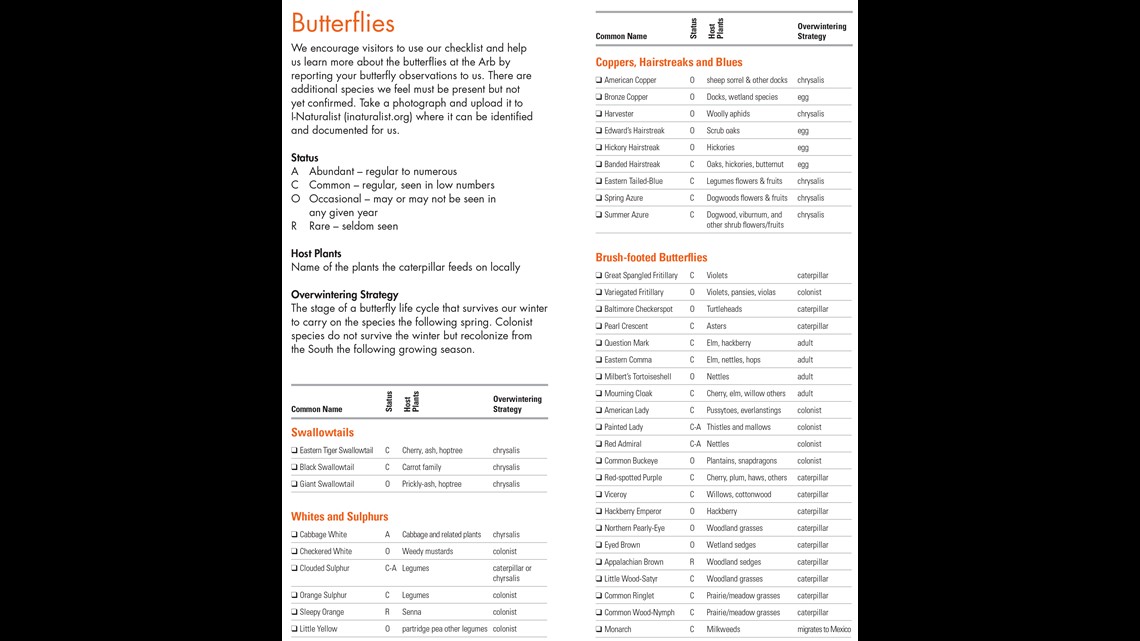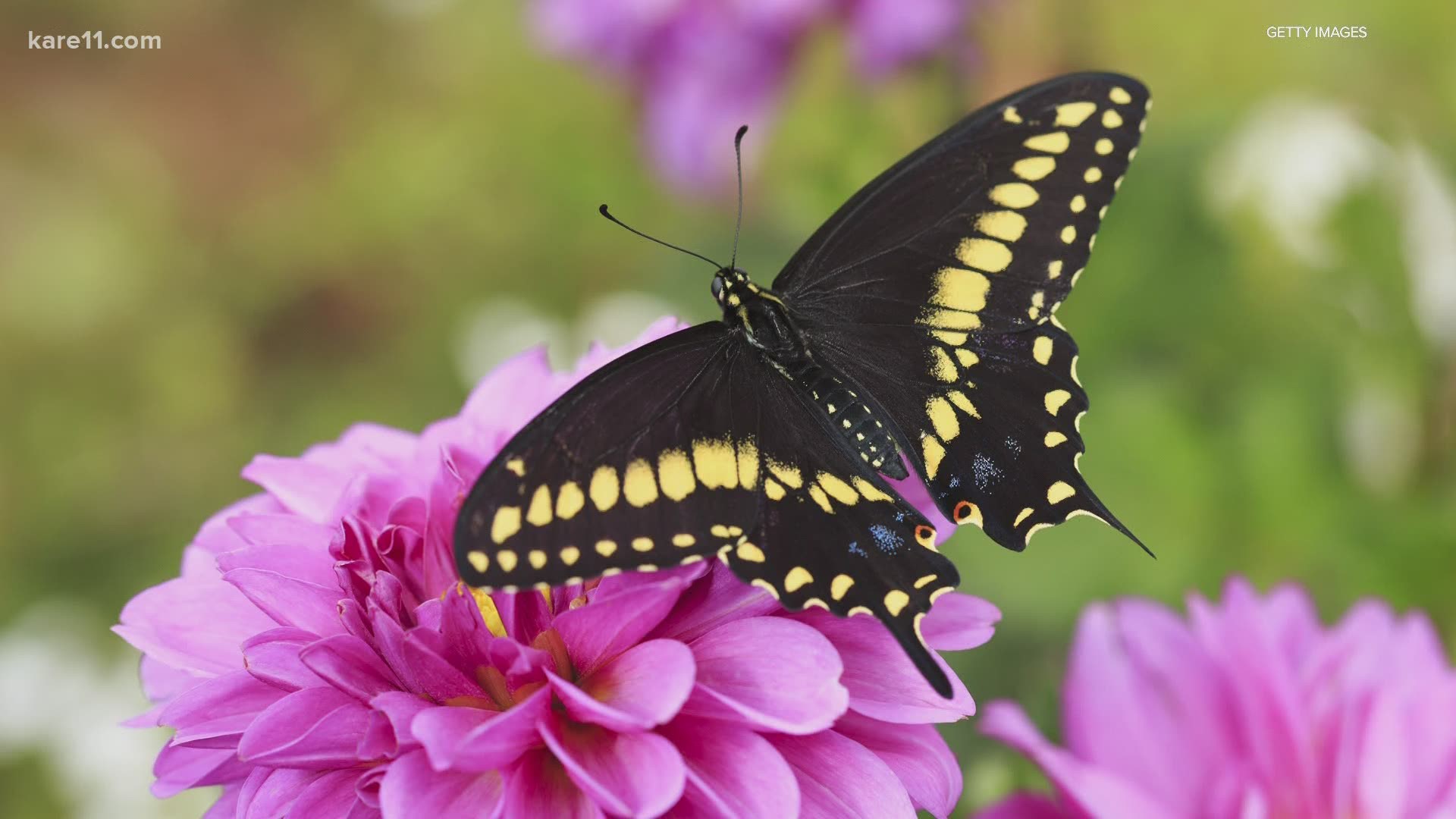CHASKA, Minn. — Alan Branhagen is a butterfly expert, in addition to the operations director at the University of Minnesota Landscape Arboretum.
LAURA: So Alan, when we are talking host plants for butterflies, let's start at the very beginning. What is a host plant?
ALAN: Well, butterflies are insects and they have a complete metamorphosis starting out as an egg. And the host plant is where the mother butterfly lays that egg because the next stage is the caterpillar and that's the eating machine component of a butterfly and host plants are critical to raising butterflies.
LAURA: So if you will, can you just walk us through a few different and great host plants for us to incorporate in our yard?
ALAN: Well today in the garden here we've seen the tiger swallowtail. The tiger swallow tail, a big yellow and black butterfly, and unfortunately its host plant is ash trees. With emerald ash borer we won't tell you to plant that one. But other things like plum trees and the wild black cherry so if you want those you need to plant those.
There's also a black swallowtail, black with yellow markings, pretty common. And it likes things in the carrot family so actually carrots and dill and parsley. Here in a prairie garden, things like golden alexanders are really good for it.
Today we've also see the great spangled fritillary butterfly, which is another large orange one with these beautiful silver sparkles and its only host plant are violets.
LAURA: Those typically grow in our lawn, but also clover lawns are a big trend right now that also play into these host plants.
ALAN: They do. What used to be very common when I was a kid ... these clouded sulphurs and orange sulphurs. I think people recognize that name, the yellow and orangish-yellow butterflies that used to be everywhere. Their host plant is native species, native clovers, but they will also use the introduced clovers so when you plant a clover lawn you're planting host plants for them and hopefully we can get those to recover as well.
BOBBY: So if there was one plant to attract one butterfly, what one would you use?
ALAN: Almost no one plants hickory trees and actually there is this little hickory hairstreak that is tied to those. And I will admit a couple weeks ago I came around my front yard and there was this little hickory hairstreak on some anise hyssop nectaring. And yes I do have hickory trees in the backyard. So that's definitely one to consider.
And of course that's only a few of the many thousands of butterflies there are, but always a wealth of information. The Arboretum has a butterfly checklist that includes all these host plants that we can grow here.





